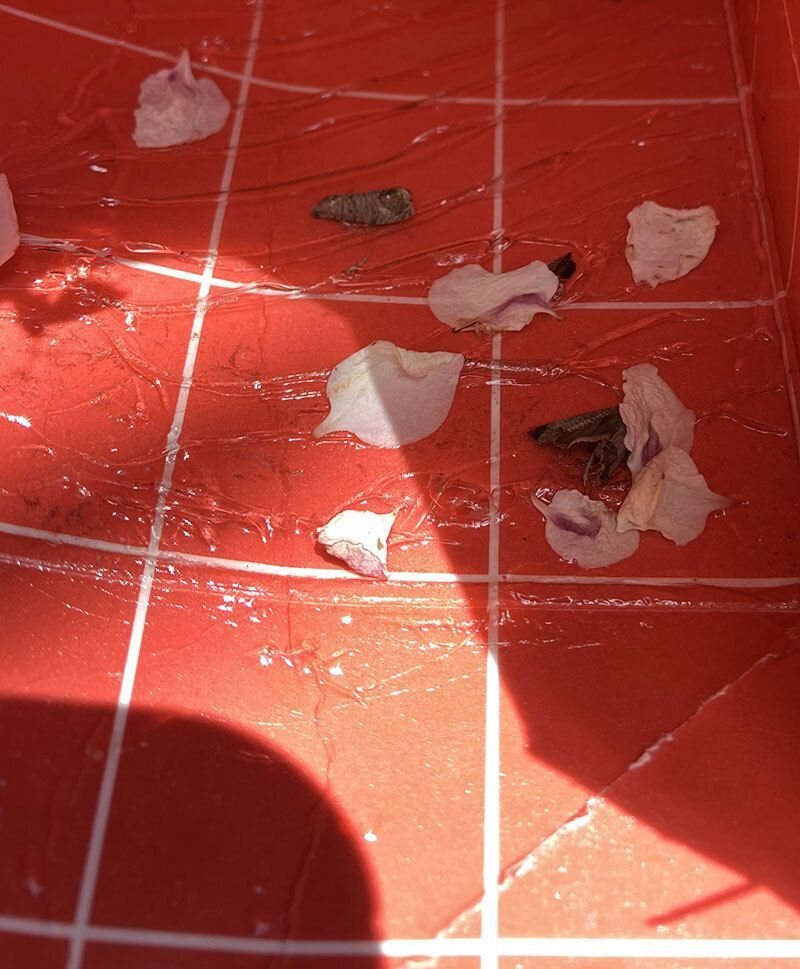
Apples are in full bloom now. We have caught Codling moths in pheromone traps in the Missoula area. If you have traps, check them for Codling moth now. It is too early to spray for Codling moth. Now is a good time to get the spray materials on hand. The least-toxic option is Spinosad or pyrethrum. Malathion, pyrethrin, & permethrin are the hard-pesticide options. Leafroller populations are increasing at our sample sites. There is no need to treat for leaf rollers unless you find more than 4 worms curled up in the leaves in a 10 branch sample. Tent caterpillars are hatching on chokecherry and other trees now, you will see a mass of webbing and caterpillars on branches. Either cut out the branch or treat with Bt(Bacillus Thuringensis). It is too early to spray for Cherry fruit worm.
If White Pine Weevil killed the very top of your spruce tree last summer, you should apply the first of two protective insecticide sprays on spruce tree terminals as new growth begins.( any time in the next week) Pyrethrum is the least toxic option. Cyfluthrin or permethrin is the hard pesticide option. You need only spray the tops of spruce trees.
White woolly aphids are present on Spruce and Douglas Fir trees now. If you had pine-cone-like galls on spruce trees last year, treat this woolly aphid stage of the Spruce gall adelgid ASAP with insecticidal soap.
Check the undersides of Virginia Creeper leaves now for tiny, aphid-like leaf hopper larvae. If leaf hoppers turned Virginia Creeper leaves brown last year, spray insecticidal soap plus Pyrethrin as soon as you find leaf hopper larvae on leaf undersides. Ash leaf curl aphids are starting to curl ash leaves now; it is just about too late to treat them for this year. Ash leaf curl aphids will be leaving ash trees to spend the summer feeding on roots in the next few weeks.
Sawflies are showing up in the landscape and garden. If you see these ¼ “, greenish worm-like larvae, Leaving trails and brown areas in leaves, spray them with spinosad or neem. Blister and rust mites are causing raised, yellow to brown blisters on apple, pear, maple, and mountain ash leaves. It is too late to spray for blister and rust mites. Aphids are hatching now on plum tree leaves and on other aphid-prone shrubs. If aphids were a problem last year, you can spray with insecticidal soap.
Rainy days followed by temperatures above 75°F are ideal for fire blight infection and old cankers are beginning to seep bacteria as the pathogen grows. Fire blight is a bacterial pathogen that infects flowers of pear, apple, crab apple and other members of the Rosaceae family. Symptoms include dead branches, water-soaked blossoms, light brown to blackened leaves, discolored bark, black "shepherd's crook" twigs. The initial symptom of shoot infection is flagging or wilting of the shoot tips. If trees are infected, early identification to prune out infections is crucial. After bloom it would be a good time to spray a copper fungicide to control peach leaf curl on peaches.
Grasshoppers are hatching in grassy, south-facing areas. Now is the time to apply control for grasshoppers. Domesticated livestock, such as chickens, turkeys, guinea fowl, geese and ducks are good for keeping grasshopper populations in check, although they tend to damage the plants in the garden, too.
The last frost date is close to being here for our area, and the forecast looks good for staying above freezing. Even though I would be cautious about planting frost-susceptible garden plants such as tomatoes, basil and peppers, have frost protection on hand just in case, such as row cover or wall of waters. Be sure to harden of plants first! Pea weevils are notching the edges of pea leaves now in some areas where folks planted peas early. When the weather warms, plants usually grow fast enough to outgrow the weevil injury. Soil temperatures are 58 F.
FIRE BLIGHT *This model only applies when trees are in bloom. If you had fireblight last year, the risk is high at this time. Taken today from Utah Traps website.
